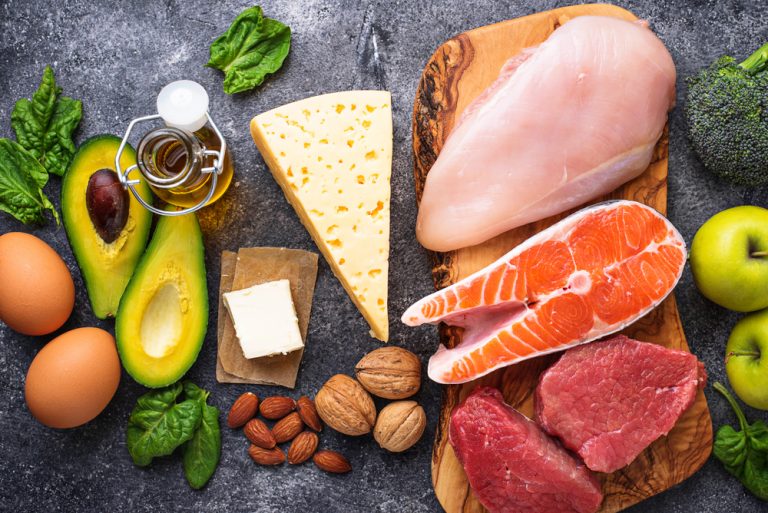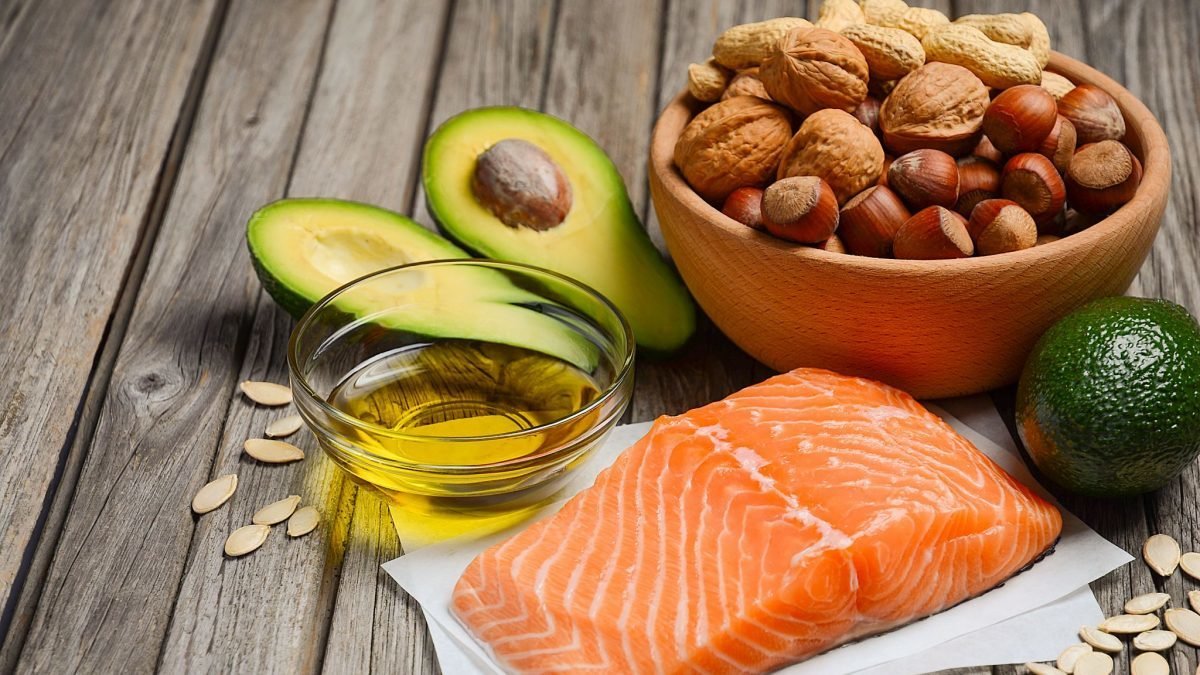ALL ABOUT KETOGENIC DIET IN BODYBUILDING
The ketogenic diet for bodybuilding is a way to eat regularly. I still remember when I first heard about it, it was in the latest muscle magazine. I was 17 years old.
This has been billed as a wonderful diet that allows us to play at anabolic hormone levels while minimizing catabolic hormones for our muscles. At that time, knowing nothing about pharmacology, I stupidly got into the panel.
More than ten years have passed since then, and the ketogenic diet has regularly returned to fashion. According to some, it will only bring benefits, even for health. What is it really?
Let me explain so as not to jeopardize your health and maximize your bodybuilding progress. PS: This article is for non-doping bodybuilders.

What is the ketogenic diet?
The ketogenic diet, also referred to as the Atkins diet, is a diet in which you only consume very few carbs .
Thus, we increase the amount of lipids (oils, avocados … but also some oils, cheeses …) that we consume, keeping constant, even increasing the amount of protein consumed.
Basic rules regarding the amount of protein consumed are set at about 2 grams per kg of “dry” body weight, regardless of the period. By consuming few carbohydrates ( less than 50g per day in scientific research), we hope to produce ketone bodies , energy from acids, the released fats or lipids that we eat.
It’s like saying that besides fat, we only eat vegetables, raw vegetables, and protein sources. We avoid all sources of carbohydrates such as rice or pasta, but also legumes, fruits, without which we would then exceed 50 g of carbohydrates per day, and we could not go into ketosis .
It may be advisable to increase the proportion of medium chain triglycerides in your diet, such as coconut oil, because it is easier to make ketones from TCM.
They are easier to use to “produce” energy. The production of ketones causes a decrease in the blood pH , that is, blood acidosis. We’ll go into more detail on the impact it can have and how to compensate for it with food.
Finally, drug stores sell strips to measure the presence of ketone bodies in urine, which rarely reflect blood pH. In the early days of the ketogenic diet, they were heavily misused.
For paying the price, I never found the slightest acidity in my urine when I tested this diet, which is fine as the body compensates for this increase in acidity (let me explain as below).
Ketogenic diet and muscle gain
To gain muscle , if you are not a beginner, you must follow a diet containing a little more calories , which we spend to gain weight slowly but surely, as much as possible limiting fat intake (see this article).
We saw together in the podcast above that according to people, their origins, their activities, their metabolism, we had energy and caloric needs different.
An example of a diet for weight gain might be:
| Sample Weight Gain Diet | |
| Morning | 8 hours |
| whole eggs | 4 |
| Buckwheat flakes | 150 g |
| Apple | 100 g |
| A square of your choice | 2 squares |
| Noon | 1:00 |
| Turkey | 150 |
| Quinoa | 120 g |
| Ratatouille | 200 g |
| Olive oil | tablespoon |
| Snack | 4 pm |
| Organic Protein Powder | 40 g |
| Nuts | 20 g |
| Orange | 100 g |
| Evening | 20 hours |
| Salmon | 150 g |
| Pasta is weighed before cooking | 80 g |
| Broccoli | 200 g |
| Rapeseed oil | tablespoon |
This is obviously just an example, but you can use it as a guide to create your own personalized diet (you can learn how here).

It must be said, a diet without any carbohydrates in your diet, when you do not have an “abnormal” metabolism (that is, very slow), is a mistake, especially for muscle building and progress. It’s almost impossible to get calories without carbs. So, an example of a ketogenic diet would be:
| Example of a ketogenic diet for bodybuilding | |
| Morning | 8 hours |
| whole eggs | 6 |
| Apple | 100 g |
| A square of your choice | 2 squares |
| Noon | 1:00 |
| Beef 20% fat | 200 g |
| Ratatouille | 200 g |
| Olive oil | Two tablespoons |
| Snack | 4 pm |
| Organic Protein Powder | 40 g |
| Nuts | 60 g |
| Evening | 20 hours |
| Salmon | 200 g |
| Broccoli | 200 g |
| Rapeseed oil | Two tablespoons |
If you decide to stick to such a diet to gain weight, the only way to increase your calories, if not enough, is to increase your oilseed intake ( given the risks that this entails, see this article), your consumption of butter or your consumption of cheese, which we know to have health effects when eaten in excess, is detrimental.
You could eat chunks of fat directly like the ones in the rib steak, but you have to be really motivated to continue following the ketogenic diet.
You should know that basically our body functions mainly from carbohydrates , the glycogen stores that are in our muscles. We are very ill-equipped to use fat for energy. This is a question of the energy sector .
In the 1990s, an experiment was conducted with professional bodybuilders from the WBF (rival federation with the IFBB) to test this diet, which in theory was wonderful. The result was a complete fiasco.
Due to the lack of carbohydrates, despite the fact that everything was offset by an increase in lipid intake, which led to the same number of calories, they all turned out to be amorphous without energy.
None of the bodybuilders continued the experiment prior to competition because they saw abnormal strength and muscle loss despite high doses of anabolic steroids and hormones (doping).
It is probably possible if you go very slowly, gradually reduce the amount of carbohydrates to the detriment of lipids, and live well, especially if you were very fat before and your insulin sensitivity is getting worse, but other than that, I I strongly advise you to do without carbohydrates in order to progress, on the contrary.
We’re still very far from the ketogenic diet – 0 grams of “straight” carbs in weight gain. Conclusion No. 1 . There is a better way to build muscle and mass than a ketogenic diet.
Ketogenic diet and weight loss

However, carbohydrates as such do not inhibit drying, lose fat while maintaining maximum muscle mass, especially when we consume the right sources, i.e. low carbohydrates the glycemic index and their amount is adapted to us, our metabolism in relation to our activities, our history, our genetics.
As always, redundant, bad choices are bad. Any change, be it in training or bodybuilding diet, should always be very gradual. For example, if you are gaining mass with 300 grams of carbs per day, and you decide to attack dry and go from zero to 0 carbs, you will be completely amorphous, without energy, as I tell you. explained it above.
It’s also the best way to slow down your metabolism excessively and never end up dry while increasing muscle loss.
The ketogenic diet, which is a “0 carbohydrate” (or almost) diet, is actually a paper diet to dry out, but not overnight, and probably not for everyone, for everyone with different needs .
In my experience, since 2006, I’ve rarely seen people needing to reduce carbs to 0 for drying. This can happen, but in the short, very short term, for people who spend little time outside of strength training and have a strong fat history while being obese.
Eating 0 carbohydrates also exposes itself to “ acidosis “, which is “acidic blood”, which we know is extremely harmful. Even if the body regulates its own pH, the fact remains: it does so from what makes us, especially when we consume acidic foods, as in the case of the ketogenic diet and very few alkaline foods.
Thus, we use our bones and muscles to restore a normal pH level of around 7, which cannot function if it is acidic. Eating a ketogenic diet, whether you are gaining weight, dry, or for your “health”, means exposing yourself to muscle and bone loss (osteoporosis), in addition to possible hormonal imbalances and other health problems (heart, skin, breath, intestines, etc.).
The ketogenic diet makes it more fragile at all levels. Conclusion No. 2 . Therefore, creating a ketogenic diet for drying without gradual transition and unnecessarily is a big mistake.
Conclusion
I think you get the idea that the ketogenic diet, otherwise known as a no-carb diet, is not a wonderful diet . It could even be a very dangerous diet with a risk of dizziness, see coma . Everyone who passes by will unfortunately confirm this for you.
There are also alternatives to the basic ketogenic diet: the cyclic ketogenic diet , which consists of introducing one or more days (carbohydrate recovery) with a high carbohydrate content to restore metabolism after it falls given the low calorie intake.
This can be understandable at the end of the diet when you can no longer dry out and switching to 0 carbohydrates becomes mandatory, as in preparation for a competition. Bouncing it into the ketogenic diet makes it more effective within a few weeks if you consume 0 carbs. However, this is not a required passage for most. I hope I have enlightened you on this matter.
